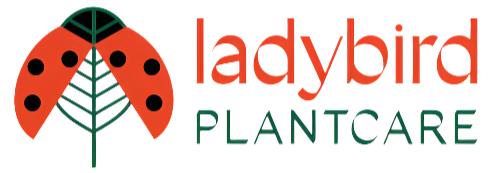Want to get rid of aphids without chemicals? Read on

Aphids are soft bodied insects which live on the sap of a huge range of plants and flowers. You'll see them on stems, inside flowers, on the underside of leaves, everywhere really! Aphids can be green, black, orange, pink or shades of brown. The green aphids typically found on roses are usually called "greenfly", and the fat black aphids often found on broad beans are called "blackfly".

Some Aphids have wings so can travel from plant to plant creating new colonies at any time. Aphids multiply extremely fast during warm weather by producing live young Aphids which already have the next Aphid generation developing inside them when they are born. They can go from nymph to adult in just 7 days.

Identifying Aphids
Aphids are a few mm across, so you should be able to see them without a magnifying glass. Look for little pear-shaped bodies with thin spindly legs. They don't move around very fast because they are usually in the process of feeding. Look out for aphids from Spring to Autumn, and it's much better to treat for aphids before they build up big colonies. You will also see 'aphid ghosts' white skins or casings that they have shed.
Some of the more common species include the green peach aphid (Myzus persicae) which vary in colour from pale yellow to green to pinkish-red, the melon or cotton aphid (Aphis gossypii) and the black bean aphid (Aphis Fabae). There is also an aphid that specialises in brassicas called the Mealy cabbage aphid (Brevicoryne brassicae) and one that is becoming more prevalent, the Woolly Aphid (Eriosoma lanigerum) which feeds on woody stems rather than leaves like it's counterparts. This aphid secretes a white woolly substance, giving it it's common name.
Why control aphid numbers?
Aphids suck the sap out of the leaves and stems of the host plants, weakening them and causing distortion to emerging flowers and leaves. Bad Aphid infestations are very debilitating. The buds don't swell fully, and often the flowers and fruit are small. Unchecked an infestation can wipe out seedlings and young plants so it is best to introduce controls for aphids as soon as you find aphids in the garden.
It's not just the physical damage that aphids do, but because aphids feed directly on the sap, they are thought to be responsible for passing on viruses and other pathogens from plant to plant.
You won't be able to see any holes or bite marks because aphids feed by jabbing their long sharp mouth parts into the soft parts of the plant and sucking out the juices into their body.
Aphids excrete a sticky honeydew which turns black in damp conditions, resulting in sooty mould. This blocks the leaf pores and cuts out light falling on the leaves, apart from being quite unsightly, this sooty mould can starve the plant by blocking photosynthesis. Early aphid treatment will prevent all these problems.
What about ants and aphids?
Ants feed on the honeydew so protect aphid colonies 'farming them'. This makes it difficult for aphid predators to get to their prey. If you have an ant problem on plants that have aphids or are prone to aphids it is a good idea to treat the ants.

